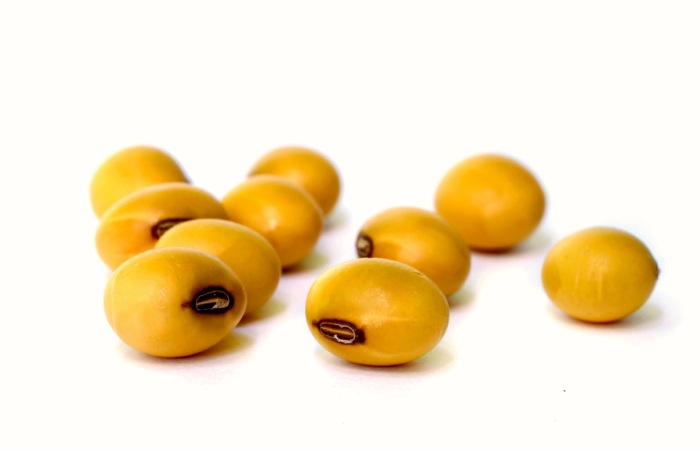The United States has crushed an unprecedented amount of soybeans since the harvest began last fall, but there have not been as many buyers as processors had hoped for, and this could end up burdensome on domestic soybean supply.
Data released by the National Oilseed Processors Association Feb. 15 showed that its members crushed 160.621 million bushels last month, which marked the third busiest January on record.
U.S. soybean processors have crushed 3.4 per cent more soybeans between Sept. 1 and Jan. 31 than the previous record for the period, which was set in 2007-08 and was matched again in 2015-16.
Read Also

Canadian hemp stable, but stuck on growth
Canada’s hemp industry hopes hybrid varieties, better yields, clearer regulations and new markets can help the crop break past its ceiling and get Canadian farmers planting more hemp acres.
The crushing of soybeans to produce high-protein soymeal for animal feed had been the primary use for the oilseed in the United States up until last year, when exports took the No. 1 spot in the face of heightened global demand. But domestic crush is still expanding and is expected to reach an all-time high this year.
The big monthly crush numbers so far in 2016-17 have the soybean markets’ attention and are among several factors that have kept Chicago soybean futures elevated amid projections for the large carry-out and bumper South American crops.
- Read more: Dry spell in Argentina may spoil buzz for soybean bulls: Braun
- Read more: U.S. soybeans may be headed for 90 million acres in 2017: Braun
But perhaps soybean processors have overdone it, as soymeal supply is piling up in rural America faster than the end-users have been purchasing it. This situation could become a strain to domestic prices in some form.
The U.S. Department of Agriculture has forecast a record 1.93 billion bushels of soybeans to be crushed by Aug. 31, which appears well on its way to becoming a reality.
But without a considerable adjustment to crush or the already-large 2.05-billion-bushel export target, domestic year-end soybean supply – or carry-out – will end up much higher than what has been seen in recent years.
Healthy margins
Elevated futures prices in the soy products over the past month or so have been a deterrent for the physical buyers but an encouragement to crushers.
The record crushing pace in the first five months of the 2016-17 marketing year has led to such a buildup of soymeal supply that cash discounts to meal futures this month fell to their widest levels in at least 17 years.
Meanwhile, soybean processors have been reporting that demand from livestock and poultry producers has been light as buyers have been delaying purchases waiting for better prices.
But crush margins have been good and the processing plants have continued operations, especially since the U.S. farmer has been willing to unload soybeans in the price environment of the past several months.
Perceived issues with the Argentine soybean crop in mid-January catapulted CBOT soymeal futures to the highest price levels in six months, and this continues to support the higher margins.
Not only is the domestic supply of soymeal plentiful, but there is stiffer-than-usual competition from other feed sources.
Record U.S. ethanol production has led to a buildup of its byproduct – distillers dried grains (DDGs) – another common animal feed. Additionally, the anti-dumping investigation launched last year by China, a key buyer of U.S. DDGs, has dramatically curbed domestic exports to the East Asian country. Cash prices for DDGs are at their lowest levels in over two years.
Too much crush?
Since the soybean marketing year began in September, analysts polled by Reuters each month prior to the NOPA data release have ever so slightly underestimated monthly crush volumes on the whole. This is in contrast to the previous three years in which analysts had a slight high bias in their estimates over the same period.
Making the same comparison with monthly soyoil stocks reveals that the same analysts have been underestimating monthly soyoil stocks as a whole in 2016-17 – in contrast to the previous three years which had analysts overestimating the monthly supply.
What these two figures might suggest is that U.S. soybean processors are simply crushing more soybeans than what the market would logically assume given the current price levels – and in turn soyoil stocks are piling up at a faster rate.
U.S. soybean crushing historically pumps the brakes in February, so a big slowdown relative to last month would be expected. But the reduction in activity this month may not necessarily indicate a pullback in crushing relative to the long-term picture.
USDA tendencies
In the past 20 years, the largest-ever increase in final U.S. soybean crush over what the USDA had projected in February was 5.45 per cent in 2012 for the 2011-12 marketing year. This also represents the largest such deviation in the months moving forward – as future USDA forecasts will start moving closer to the final number.
Assuming a very optimistic end to 2016-17 and applying 2012’s deviation to USDA’s current 1.93-billion-bushel forecast would bump crush to 2.035 billion bushels.
This would reduce carry-out to 315 million bushels from the current projection of 420 million with exports left untouched – well above last year’s 197 million bushels.
There is a chance that unlike previous years, USDA will not have to crank up U.S. soybean exports late in the year. So if this proves true, carry-out will almost certainly be well above last year’s levels at the end of the marketing year unless crush finds some unprecedented boost in the coming months.
But crush projections are not typically volatile from now until the figures are finalized later in the year. In fact, USDA’s soybean export numbers are historically subject to adjustments more than twice the size of those to crush over the next several months.
And USDA’s potential upcoming revisions to both crush and exports are going to determine whether 2016-17 U.S. soybean carry-out stays at the current levels over the next several months or drops as in previous years.















